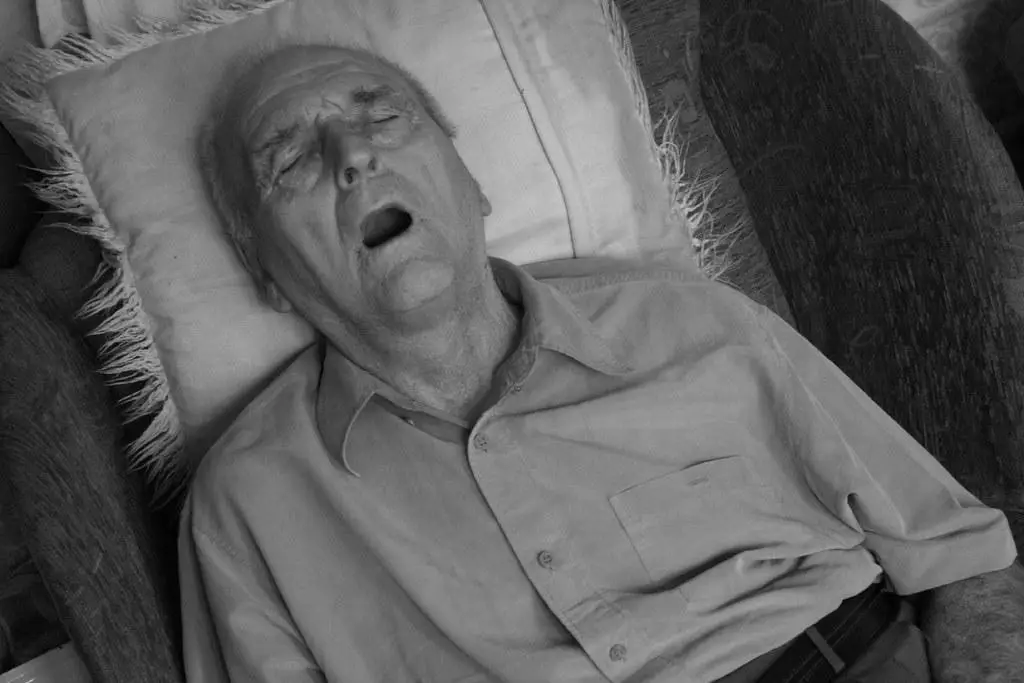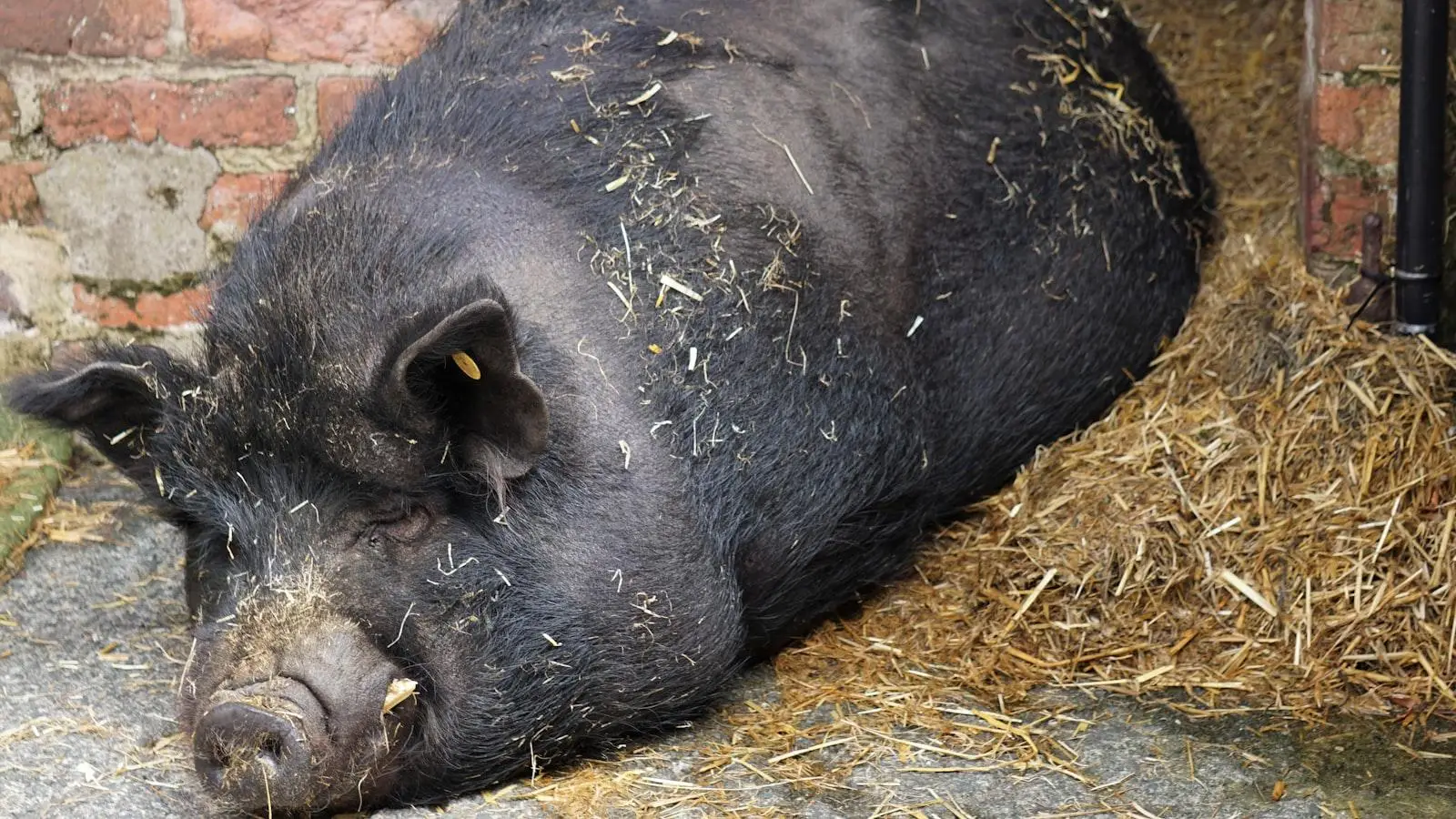Snoring, sleep apnea, and other breathing problems are more than just annoying – they could be indicative of deeper health issues. In the YouTube video titled “Uncovering the Truth Behind Snoring & Sleep Apnea”, the host delves into the fascinating connection between our modern lifestyles and these common ailments. By combining insights from James Nestor’s book “Breath” and Weston Price’s research, a clearer picture emerges of how our diets and habits impact our breathing and overall health. Join us as we explore the root causes of these issues and uncover potential solutions for better sleep and well-being.
1. Exploring the Link Between Nutrition and Breathing Problems

Let’s delve into the fascinating connection between nutrition and breathing problems, specifically focusing on snoring and sleep apnea. A captivating read titled “Breath: The New Science of a Lost Art” by James Nestor sheds light on this topic. Nestor’s research into indigenous cultures and their dental health compared to the modern world is eye-opening.
One striking observation is the difference in dental health between ancient cultures and today’s society. Ancient skulls reveal straighter teeth, wider faces, and better bone structure, while modern-day individuals often require wisdom teeth removal, braces, and surgery for nasal septum deviation.
James Nestor highlights the importance of chewing and its impact on breathing problems. In today’s soft food culture, where everything is easily chewed, we are missing out on the benefits of chewing tough foods like vegetables. This lack of muscle activation in the jaw could be a contributing factor to breathing issues.
On the other hand, Western Price’s emphasis on nutrition complements Nestor’s findings. A diet rich in whole, nutritionally dense foods provides the essential trace minerals and vitamins needed to support bone development and overall health. This holistic approach underscores the vital role of both chewing habits and nutritional intake in maintaining optimal breathing function.
2. The Impact of Soft Foods on Dental Health and Sleep Apnea

Let’s delve into the connection between consuming soft foods, dental health, and sleep apnea - all under the umbrella of breathing issues. In the book “Breath: The New Science of a Lost Art” by James Nestor, he highlights the impact of modern diets on our dental health and breathing patterns. Nestor’s research on ancient cultures with healthier eating habits and dental structure compared to modern societies raises some intriguing questions.
One striking difference he observes is the lack of chewing in today’s diets, where soft foods dominate our plates. From soups to dips, our teeth do not get the exercise they need to stay healthy and aligned. This lack of chewing not only affects our dental health but can also contribute to breathing problems like snoring and sleep apnea.
On the other hand, the work of Weston Price emphasizes the importance of nutrition in maintaining strong bones and facial structure. The deficiency of essential nutrients can lead to improper bone development, which in turn can affect breathing patterns. By combining insights from Nestor and Price, we can start to understand the role of both chewing and nutrition in preserving our dental health and potentially addressing sleep apnea.
It’s clear that our modern diet of soft foods may not be doing our dental health or breathing any favors. By revisiting the eating habits of older, healthier cultures and paying attention to the nutrients we consume, we might just uncover a path towards better breathing and overall health.
3. The Importance of Chewing in Maintaining Strong Facial Bones

Let’s delve into the fascinating connection between chewing and maintaining strong facial bones, and how it correlates with issues like snoring and sleep apnea. When we look at ancient cultures compared to modern society, there is a significant disparity in both dental health and facial structure. Ancient skulls reveal straight teeth, wider faces, and robust bone structures, while in today’s world we often see crowded teeth, narrow faces, and the need for braces and wisdom teeth extraction.
So, what’s causing this shift in our oral and facial health? One key factor is the lack of chewing in our diets. In the past, people consumed whole, nutritious foods that required substantial chewing. However, in modern times, our diets consist of soft, processed foods that don’t stimulate the muscles in our jaw and face. This lack of chewing not only affects our dental health but also impacts the development and strength of our facial bones.
James Nestor, in his book “Breath,” highlights the importance of chewing in maintaining overall health. He emphasizes that the act of chewing not only exercises our jaw muscles but also contributes to strong bone structure. When we chew, we stimulate blood flow to the bones in our face, promoting bone density and strength. In contrast, a diet lacking in chewy, whole foods can lead to weakened facial bones and contribute to issues like snoring and sleep apnea.
4. Understanding the Role of Nutrition in Building Structurally Sound Bones

Let’s delve into the root cause of breathing problems such as sleep apnea and snoring, as explored in the book “Breath: The New Science of a Lost Art” by James Nestor. Nestor’s research highlights the importance of proper breathing and how it’s linked to our overall health. He investigates the impact of modern diets, which consist of soft foods and lack of chewing, on our bone structure and breathing patterns. In comparison to older cultures that consumed whole, nutritionally dense foods, our modern diets are causing jaw misalignment, facial structure issues, and breathing problems.
Examining the findings of Western Price’s research on indigenous cultures further emphasizes the crucial role of nutrition in bone development. Price’s studies reveal that a diet rich in essential trace minerals and vitamins is essential for activating proteins that build strong, structurally sound bones. Without the necessary nutrients, bones may not fully develop, leading to various skeletal issues. It’s clear that the connection between nutrition and bone health is vital for overall wellbeing, including proper breathing and oral health.
The contrast between traditional diets filled with nutrient-dense foods and our current consumption of processed, soft foods raises concerns about our bone structure and overall health. By incorporating whole foods rich in essential vitamins and minerals, we can support bone development and prevent issues like sleep apnea, snoring, and jaw misalignment. It’s essential to understand the role of nutrition in building structurally sound bones, as it directly impacts our breathing, posture, and overall health in the long run. Let’s prioritize our diet and chew on whole foods to promote optimal bone health and well-being.
5. Activating Muscles Through Chewing for Overall Bone Health

In the book “Breath: The New Science of a Lost Art” by James Nestor, the importance of chewing for overall bone health is highlighted as a key factor in preventing breathing problems such as sleep apnea and snoring. Nestor’s research focuses on the lack of chewing in modern diets, which consist mainly of soft foods like soups and dips, compared to the diets of older cultures that included a variety of whole foods.
When we chew, we activate the muscles in our jaw and face, which in turn stimulate bone growth and strength. This is crucial for maintaining good bone structure, especially in the face and jaw areas. Without adequate chewing, our bones may not develop properly, leading to issues such as nasal septum deviation and the need for orthodontic treatments like braces.
By incorporating more chew-intensive foods into our diets, such as vegetables and fibrous meats, we can help strengthen our facial bones and improve overall bone health. Additionally, ensuring that we receive proper nutrition with essential trace minerals and vitamins is crucial for activating proteins and minerals that support bone growth and structure.
While traditional cultures focused on whole, nutrient-dense foods that required extensive chewing, many modern diets lack these important elements. By bringing awareness to the connection between chewing, muscle activation, and bone health, we can take proactive steps to prevent breathing problems and promote overall well-being.
6. Practical Steps to Improve Breathing and Reduce Snoring

Let’s dive into the truth behind snoring and sleep apnea, and explore some practical steps you can take to improve breathing. One essential aspect to consider is the importance of proper chewing. In modern times, our diets consist of soft foods that require minimal chewing, leading to weakened jaw muscles and potential breathing issues. Compare this to the diets of older cultures who consumed whole, nutrient-dense foods that required more chewing, resulting in stronger jaw muscles and better overall facial structure.
Furthermore, nutrition plays a crucial role in the development of our bones and overall health. Western Price’s research highlights the significance of consuming foods rich in trace minerals and vitamins that activate the proteins necessary for bone development. Without proper nutrition, bones may not develop to their full potential, increasing the risk of structural issues that can contribute to breathing problems.
To combat the negative effects of modern diet and lifestyle on breathing, it is vital to incorporate whole foods rich in essential nutrients, practice proper chewing habits, and engage in activities that strengthen jaw muscles. By making these simple yet effective adjustments, you can improve your breathing, reduce snoring, and enhance your overall health and quality of sleep.
7. Integrating Traditional Wisdom with Modern Science for Better Sleep

Let’s delve into the intricacies of breathing problems like sleep apnea, snoring, and sinus issues by exploring the correlation between traditional practices and modern science. James Nestor’s book, “Breath: The New Science of a Lost Art,” sheds light on the importance of proper breathing techniques and the impact of diet on our overall health. This book, combined with the insights from Weston Price’s research, can provide valuable solutions to common respiratory issues.
Nestor’s investigation into indigenous cultures reveals a stark difference in dental health between ancient populations and present-day societies. Older cultures, with their nutrient-dense diets and robust facial structures, had fewer dental problems compared to the modern era, where dental issues like crooked teeth, wisdom tooth extraction, and nasal deviations are prevalent. This contrast underscores the link between nutrition, oral health, and breathing difficulties.
In today’s fast-paced lifestyle, the shift towards softer, processed foods has reduced the need for vigorous chewing, leading to weakened facial muscles and compromised bone structure in the jaw and airways. This lack of muscle activation, coupled with nutritional deficiencies, contributes to conditions like sleep apnea and snoring. By emphasizing the importance of whole, nutrient-rich foods and the mechanical aspect of chewing, we can address the root causes of respiratory disturbances and promote better sleep quality.
Q&A
Q: What is the main focus of the YouTube video “Uncovering the Truth Behind Snoring & Sleep Apnea”?
A: The main focus of the video is discussing the real cause of breathing problems such as sleep apnea, snoring, and sinus issues.
Q: What book is mentioned in the video that delves into the science behind breathing and oral health?
A: The book mentioned is ”Breath: The New Science of a Lost Art” by James Nestor.
Q: How do older cultures with healthier diets compare to modern society in terms of dental health?
A: Older cultures with healthier diets had better dental health, including straight teeth and wider faces, compared to modern society where issues like crooked teeth and sleep apnea are common.
Q: What are some factors that contribute to the increase in breathing problems in modern society according to the video?
A: Lack of chewing due to a diet heavy in soft foods, lack of whole, nutritionally dense foods, and a deficiency in trace minerals and vitamins are some factors mentioned in the video.
Q: How do James Nestor and Weston Price contribute to the understanding of breathing problems in the video?
A: James Nestor focuses on the lack of chewing in modern diets, while Weston Price focuses more on the importance of nutrition and how deficiencies can affect bone development and oral health.
Q: What are some practical solutions suggested in the video for improving breathing problems and oral health?
A: The video suggests incorporating more whole, nutritionally dense foods into the diet, chewing more to strengthen jaw muscles, and possibly reevaluating the cultural norms of removing wisdom teeth and using braces.
To Conclude
In conclusion, the video “Uncovering the Truth Behind Snoring & Sleep Apnea” delves into the fascinating connection between breathing problems, dental health, and nutrition. By exploring the research of experts like James Nestor and Weston Price, we can see how our modern diet and lifestyle have strayed from the practices of ancient cultures who had healthier teeth and stronger facial bones. From the importance of chewing to the role of nutrition in bone development, there are key factors to consider when addressing issues like sleep apnea and snoring. By combining the insights from these studies, we can work towards finding effective solutions for better breathing and overall well-being. Let’s take a closer look at how we can improve our health by re-evaluating our eating habits and lifestyle choices.




Pingback: Natural Solutions for Varicose Veins: Boosting Blood Flow - Dr Strong